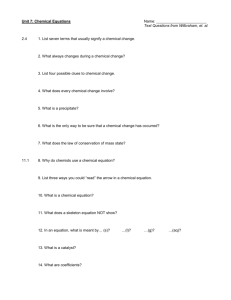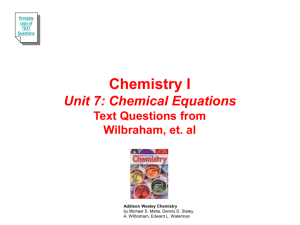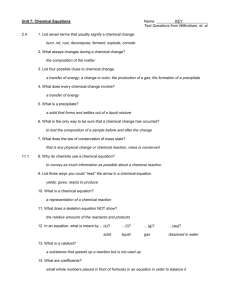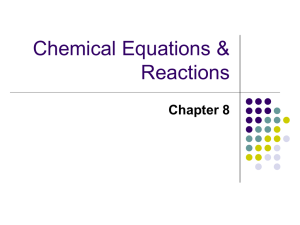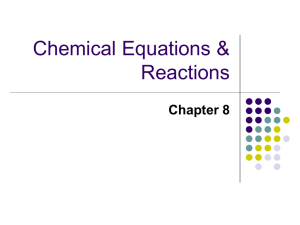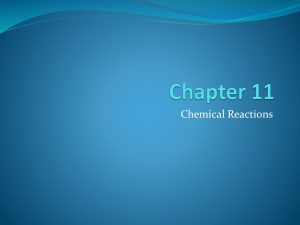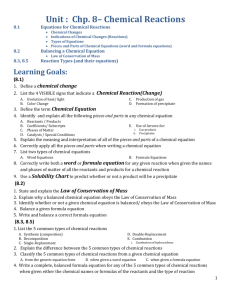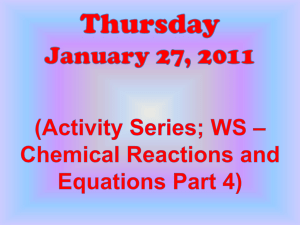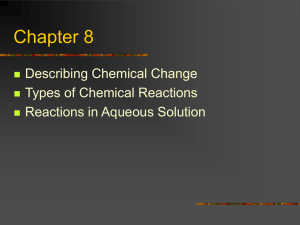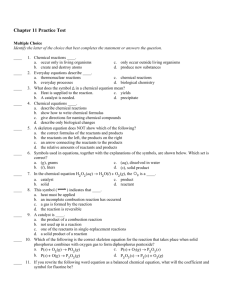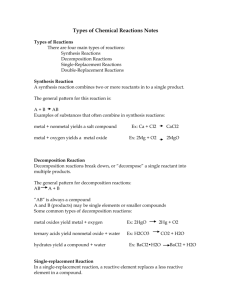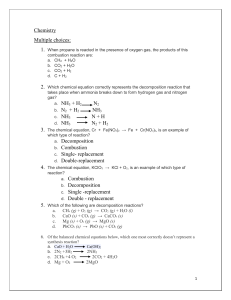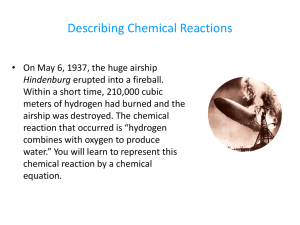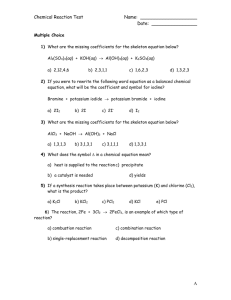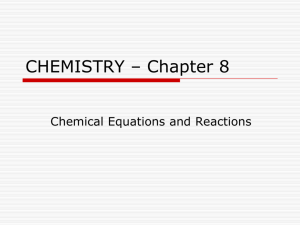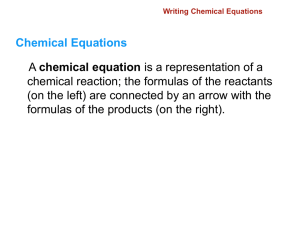Name Date Class Chapter 11 – Chemical Reactions Guided
advertisement
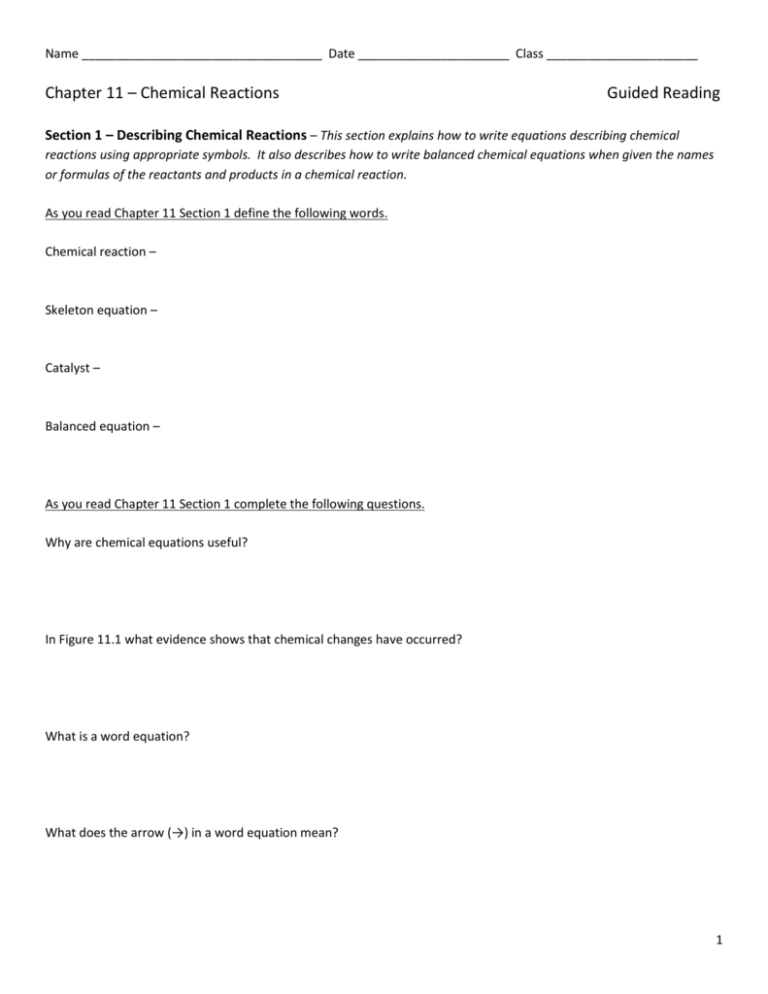
Name ___________________________________ Date ______________________ Class ______________________ Chapter 11 – Chemical Reactions Guided Reading Section 1 – Describing Chemical Reactions – This section explains how to write equations describing chemical reactions using appropriate symbols. It also describes how to write balanced chemical equations when given the names or formulas of the reactants and products in a chemical reaction. As you read Chapter 11 Section 1 define the following words. Chemical reaction – Skeleton equation – Catalyst – Balanced equation – As you read Chapter 11 Section 1 complete the following questions. Why are chemical equations useful? In Figure 11.1 what evidence shows that chemical changes have occurred? What is a word equation? What does the arrow (→) in a word equation mean? 1 What is a chemical equation? Why do chemists use chemical equations? Look at Table 11.1 summarize the information? What are coefficients? What is a balanced equation? What is the law of conservation of mass? Why do we want balanced equations? Summarize the rules for writing and balancing equations. What is something interesting about being a hazardous materials specialist? 2 Section 2 – Types of Chemical Reactions – This section explains how to identify a reaction as a combination, decomposition, single-replacement, double-replacement, or combustion reaction. It also describes how to predict the products of each type of reaction. As you read Chapter 11 Section 2 define the following words. Combination reaction – Decomposition reaction – Single-replacement reaction – Double-replacement reaction – Combustion reaction – As you read Chapter 11 Section 2 complete the following questions. Why do chemists classify reactions into these categories? Give an example of a combination reaction. In Figure 11.5 why do you think this reaction was once used in flashbulbs for photography? Give an example of a decomposition reaction. 3 Give an example of a single-replacement reaction. What is the activity series and how is it helpful? (HINT: may be helpful for you to copy the activity series also.) In Figure 11.7 why are the alkali metals stored under mineral oil or kerosene? Give an example of a double-replacement reaction. Give an example of a combustion reaction. What are the products of the combustion of a hydrocarbon? How can you predict the products of a chemical reaction? Using Figure 11.10 fill in the table below. Reaction Type: General Equation: Combination Decomposition Single-replacement Double replacement Combustion 4 Section 3 – Reactions in Aqueous Solution – This section explains how to write and balance net ionic equations. It also describes the use of solubility rules to predict the formation of precipitates in double-replacement reactions. As you read Chapter 11 Section 3 define the following words. Complete ionic equation – Spectator ion – Net ionic equation – As you read Chapter 11 Section 3 complete the following questions. What is an aqueous solution? What does a net ionic equation show us? In Figure 11.11 which ions do not participate in the reaction? Look at Table 11.3 on page 344. What information is in this table? And how is it useful? What is a precipitate? How can you predict the formation of a precipitate? 5
